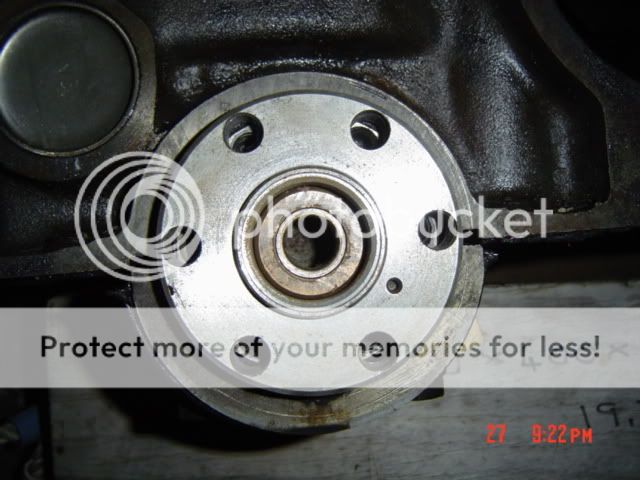On a US 250, I'd be worried that the 305 pistons would compromise the block rigidity. If you can verify the wall thickness is good, and that there isn't much core shift, you can proceed. I wasn't aware that ACL made short deck pistons at all when I did this in 2000. It's been a 1700 dollar dead end project for me, all in the vain attempt to get a great rod ratio for a supercharger I'd been planning.
I don't have any pickies of the forged pistons yet. Basically, the piston is a good swap if the block can cope with it. 56 thou is possibly too much for a US post 68 block to cope with. The Aussie blocks have more meet in them. One guy here has 80 thou over pistons in his 250.
The 228 has been a long time project of mine. Its done by welding the main bearing journals using a basic long run down hand weld process used for restoring crank pin journals when you can't source a crank. The 221 crank has a smaller 2.3" main bearing (not 2.4" like the US 250 and Aussie X-flows), smaller crank flange (3.3", not 3.62"), and a 2.75" bolt spacing on the flywheel, not 3". The 221 crank is in essence, a 200 crank with a 3.46" stroke, up 334 thou from the little US cousin.
The whole thing looked like an easy fit up, with a set of X-flow 200 rods (6.27" long), and a set of old 229/305 TRW forged pistons from a drag racing project. They used to be pretty common for Eccono racers, and there are a varierty of part numbers. The piston has about 12 cc of dish at 1.531" deck. When you mill it down to 1.45, there is no dish. Mine was shaved 50 thou off the top to 1.48", down to a 4 cc dish. The block register I worked on with the stock Aussie X-flow 250 block was assumed to be 9.48", but it is in fact 9.38", so I still have to run a thick gasket to get everything tightend up. The 56 thou over block hasn't been decked, as its pristine.
The pistons require the 200 X-flow rods to be reamed out 15 to 16 thou to fit the Chevy wrist pin. The Chevy rods are bulkier than the Ford ones, and there is plenty of space with the Ford rods on a Chevy piston. The slipper skirt has ample space to avoid any rod or cam clearance issues.
Currently, I have a nice big old porcelin bath with oil and the crank, rods and pistons and block in it. I trial fitted a new steel seventh bearing carrier. It is basically a 200 item, but with a 250 bolt spacing and bearing. It leaks kero when assembled, so I'm thinking I may have to make up a new spacer to bring the crank up to 3.62" so I can run the stock 250 seal. More expense!
The crank form the 221 is designed for this kind of 200 cube US block.
The pre 84 block has a flange like this when overlayed.
I'm totally undecided about the block. I'm considering sleaving the existing block, and flicking off the pistons. I think I should have used US 240 cube Big six 6.57" rods, which have the 0.912" wrist pin, and some ACL thin pistons, and weld up the crank flange 312 thou to 3.622". Then I'd use a thicker gasket to deal with a piston 80 thou above the block.
The other idea I've been looking at is having a variable displacement, variable head test engine. Log head, 2V, ME, or any alloy or cast iron x-flow can be trailed. One block adaptor, a range of bumpsticks, and I can dial in any combination. And any transmission or diff combo.
I may still use the 228 as a test mule for 200, 221, and 250 combinations. In summary, the Aussie 200 uses the US 250 block, so you can convert to any capacity from 188 (2.94" stroke) to 250 cubes (3.91" stroke), using the same block. A very powerfull testing tool.
With plenty of 188, 200, 221, and 250 cranks and 5.88, 6.06, 6.21 and 6.27" rods around, any combination of capacity can be made with just 8 hours of labour removing, refitting, and reinstalling the stock 1983 X-flow block. Running a control Chevy forged would allow me to run very close to detonation threashold, so I can find optimum tuning for any carb(s), cam(s), head combo and compression.
Big dreams for little people.


